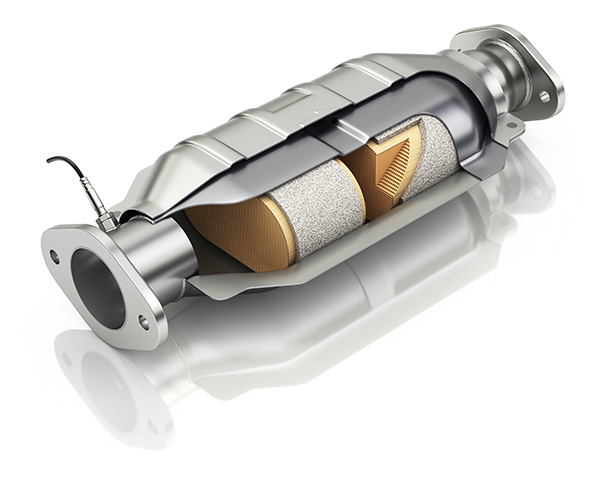
When it comes to the inner workings of your car, the catalytic converter might not be something you think about regularly. However, this crucial component plays a vital role in reducing harmful emissions from your vehicle. Without it, the air around us would be far more polluted. But what exactly is a catalytic converter, and how does it work?
The Basics of a Catalytic Converter
A catalytic converter is part of your car’s exhaust system, located between the engine and the muffler. Its primary function is to reduce the amount of harmful pollutants that exit your vehicle’s exhaust. Cars, trucks, and other vehicles emit gasses like carbon monoxide, hydrocarbons, and nitrogen oxides, all of which contribute to air pollution and smog. The catalytic converter helps convert these toxic substances into less harmful emissions such as carbon dioxide, nitrogen, and water vapor.
Made from precious metals such as platinum, palladium, and rhodium, the catalytic converter works through a process called catalysis. The metals inside act as catalysts that speed up chemical reactions without being consumed themselves, helping break down and transform harmful pollutants before they exit through the tailpipe.
How Does a Catalytic Converter Work?
At the heart of the catalytic converter's operation are two different types of catalysts: a reduction catalyst and an oxidation catalyst. Let’s break down how each of these functions within the converter.
Reduction Catalyst
The first stage inside a catalytic converter involves the reduction of nitrogen oxides (NOx). Nitrogen oxides are harmful gasses that contribute to smog and acid rain. As exhaust gasses pass through the reduction catalyst, nitrogen oxides are broken down into nitrogen and oxygen. These gasses are far less harmful and are then released into the atmosphere.
Oxidation Catalyst
The next step is the oxidation of carbon monoxide and hydrocarbons. Carbon monoxide is a poisonous gas, while hydrocarbons are unburned fuel molecules that can contribute to smog. The oxidation catalyst helps convert carbon monoxide into carbon dioxide, and hydrocarbons are transformed into water vapor and carbon dioxide. This process helps reduce the toxicity of the emissions leaving your car's exhaust.
Signs of a Failing Catalytic Converter
Catalytic converters are designed to last a long time, but like any other component, they can wear out or fail over time. Here are some signs that your catalytic converter might not be functioning properly:
Decreased Engine Performance
A clogged or damaged catalytic converter can restrict exhaust flow, causing your engine to struggle. You might notice a loss of power, poor acceleration, or sluggish engine performance.
Check Engine Light
Your vehicle’s check engine light can come on for many reasons, but if it’s paired with other symptoms, it could be a sign of a faulty catalytic converter. A diagnostic test can confirm whether the catalytic converter is causing the problem.
Sulfur Smell
If you notice a strong smell resembling rotten eggs, it could be an indicator that your catalytic converter is not functioning correctly. This sulfur smell is often caused by an inability to properly break down exhaust gasses.
Rattling Noise
A damaged catalytic converter may cause a rattling noise coming from under your vehicle, particularly when starting the engine or accelerating. This is usually due to the catalyst inside breaking apart.
How to Prevent Catalytic Converter Damage
A healthy catalytic converter is essential for both vehicle performance and environmental impact. Here are a few tips to help keep your catalytic converter in good shape:
Maintain Your Engine
Regular engine maintenance is one of the best ways to ensure your catalytic converter stays in good condition. A poorly tuned engine can cause excessive fuel consumption, which can lead to the converter overheating and eventually failing.
Use the Right Fuel
Make sure to always use the proper grade of fuel recommended by your vehicle manufacturer. Using lower-grade fuel or fuel with high sulfur content can damage the converter over time.
Fix Engine Problems Promptly
Issues like misfiring, poor ignition, or a failing oxygen sensor can contribute to a malfunctioning catalytic converter. Address these problems as soon as possible to avoid long-term damage.
Avoid Short Trips
Short trips where the engine doesn’t reach its optimal operating temperature can cause moisture to accumulate inside the catalytic converter, leading to premature wear. Make sure to occasionally take longer drives to allow the converter to properly heat up and function effectively.
Don’t let a faulty catalytic converter affect your car’s performance or emissions. Visit Roesbery Car Care Walnut Creek for professional maintenance and repairs, ensuring your vehicle meets all emissions standards.